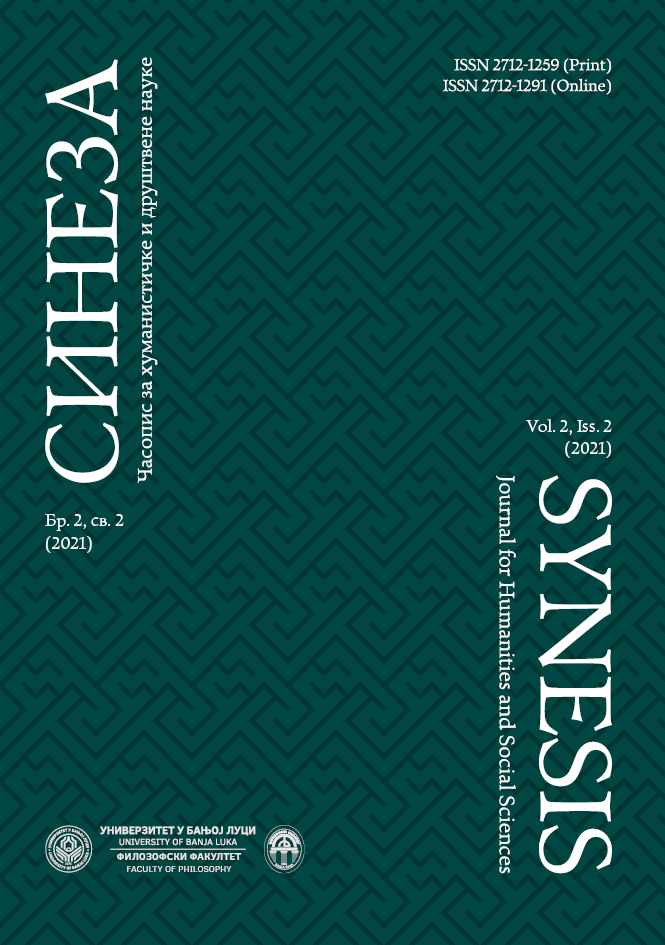Razlika transcendentalnog ega i transcendentalnog Ja u Huserlovoj fenomenološkoj egologiji
The difference between the transcendental ego and the transcendental I in Husserl’s phenomenological egology
Author(s): Andrija JurićSubject(s): Epistemology, Philosophy of Mind, Phenomenology
Published by: Filozofski fakultet, Univerzitet u Banjoj Luci
Keywords: transcendental ego; pure-transcendental I; eidos ego; disinterested spectator; reduction;
Summary/Abstract: The author analyzes the difference between the transcendental ego and the transcendental I in Husserl’s transcendental-phenomenological egology. The concept of the I is one of the central ones in Husserl’s philosophy. It has been exhaustively worked upon and, in development of which, several different standpoints have been changed, from the nonegological to the egologically solipsistic. The most mature formulation can be found in Husserl’s final works, in which an important “shift” happens, from the pure I to the transcendental ego. It is argued that this change isn’t simply terminological, but conceptual. In the light of the difference between phenomenological psychology and transcendental phenomenology, and corresponding phenomenological reduction and transcendental reduction respectively, the pure I (or I-pole) is still seen as something individual, private and psychological, and too “empty”, that needs to be overcome by a wider notion of transcendental ego that incorporates systems of intentionality, a (constituted) surrounding world, constituted intentional objectivities, habitualities, and intentional life – all without which ego couldn’t be concrete. In this part, Husserl explicates that transcendental ego is equivalent to the soul (psyche) in psychological parallel, and not to the I. Therefore, it is implied that the ego can grasp itself in two ways, as a flowing life and as an I, identical and active subject of consciousness. This, in turn, implies two different ways of constituting ego for itself – in its history of the egological genesis and, at the same time, as being one and the same I for itself. The last chapter will differentiate between two ways of defining transcendental I. According to one, the ego of epoché, which is not declinable, becomes an I, “one” transcendental I among others in transcendental intersubjectivity. The second one is, what we term, a pure-transcendental I, the I-pole of transcendental ego; the consequence of which is the necessity of original (pre-reflective) self-givenness, irrelevant of intersubjectivity. This I is then understood as the irreducible first-person point of view of consciousness, and the bearer of a character of Nunc stans. As always-subject, it itself is then unchangeable, nonpermutable, and indeclinable. Because of its emptiness, the I-pole or pure-transcendental I cannot be made concrete like the concrete-transcendental ego; and yet, precisely this I is the one that can distance itself from itself and phenomenologically investigate the transcendental ego, subjectivity, and eidos ego as the subject of transcendental reduction. In the footsteps of Ingarden’s and Fink’s critique of the subject of transcendental investigation, the transcendental-phenomenological on-looker, it will be shown that the pure-transcendental I is the phenomenologizing I, the I of the disinterested spectator, through which the transcendental subjectivity comes to itself. That I remains the same through all reductions and attitudes, through all constitutions of essential types of eidos ego, and is the ineliminable subject originally pregiven for itself as an object in original I-splitting.
Journal: Sineza
- Issue Year: 2/2021
- Issue No: 2
- Page Range: 49-68
- Page Count: 20
- Language: Serbian

